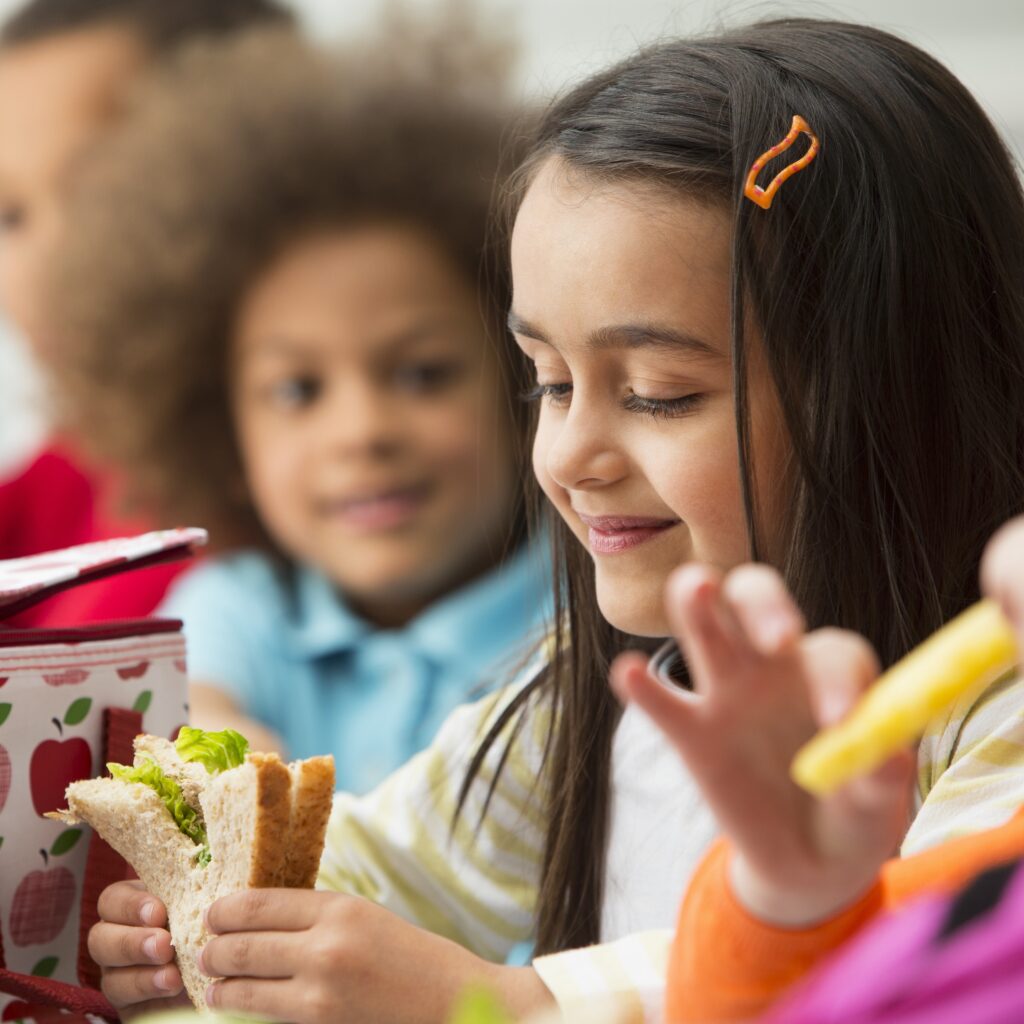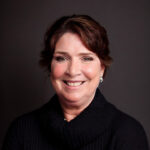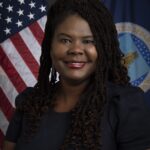We’re celebrating our 100th Episode of Well Beyond Medicine — and we’re pleased to feature special guests from the U.S. Department of Agriculture (USDA) to share more about their MyPlate resource and other efforts to support access to healthy and nutritious foods.
Most parents and caregivers put a lot of thought into how their children are fed and fueled, especially as they head off to school each day. Yet feeding their children can be a challenge for those unsure of what foods best support their children’s healthy development or who struggle to consistently access healthy, safe, affordable food. That’s where the USDA and the resources and programs it provides, including MyPlate, can help fill in the gaps.
Access additional resources and information on how to support healthy nutrition created in collaboration with the White House Conference on Hunger, Nutrition and Health.
Guests:
Caree Jackson Cotwright, PhD, RDN, LD, Director of Nutrition Security and Health Equity, United States Department of Agriculture (USDA) Food and Nutrition Service
Yetunde Akingbemi, MPH, RDN, Nutritionist, United States Department of Agriculture (USDA), Center for Nutrition Policy and Promotion
Allison Gertel-Rosenberg, MS, Vice President, Chief Policy and Prevention Officer, Nemours Children’s Health
Host/Producer: Carol Vassar
EPISODE 100 TRANSCRIPT
Announcer:
Welcome to Well Beyond Medicine, the world’s top-ranked Children’s Health podcast, produced by Nemours Children’s Health. Subscribe on any platform at nemourswellbeyond.org or find us on YouTube.
Carol Vassar, podcast host/producer:
Each week we’re joined by innovators and experts from around the world exploring anything and everything related to the 80% of child health impacts that occur outside the doctor’s office. I’m your host, Carol Vassar. And now that you are here, let’s go.
Music:
Let’s go, oh, oh
Well beyond medicine.
Carol Vassar, podcast host/producer:
Alexa, tell me about the USDA’s MyPlate.
Alexa:
MyPlate was launched by the United States Department of Agriculture, USDA, in 2011 as a visual guide to help consumers create healthier meals. The initiative aimed to make it easier for people to understand and follow the USDA’s nutrition guidelines.
Carol Vassar, podcast host/producer:
Most parents and caregivers put a lot of thought into how their children are fed and fueled, especially as they’re heading off to school each day. They might ask Alexa for help. Yet feeding their children can be a challenge for some parents and caregivers who are not sure what foods best support their children’s healthy development or might struggle to consistently access healthy, safe, affordable foods. That’s where the US Department of Agriculture, the USDA, and the vast resources and programs they provide, including MyPlate, can help fill in the gaps. Today, we hear from experts at the USDA’s Food and Nutrition Service, FNS, Dr. Caree Cotwright and Yetunde Akingbemi, and Nemours Children’s Allison Gertel-Rosenberg about how the USDA, Nemours Children’s and MyPlate National Strategic Partners like Nemours are promoting nutrition security and health equity for children and supporting their healthy eating. Let’s meet this team of experts.
Dr. Caree Cotwright, USDA:
Hello everyone. I am Dr. Caree Cotwright. I serve as the Director of Nutrition Security and Health Equity here at USDA in the Food and Nutrition Service, and I lead a whole-of-department approach to the department’s core priority of tackling food and nutrition insecurity. I also help with our USDA’s implementation of actions to accelerate progress on the White House conference goals. And these are both goals to end hunger, to improve nutrition and physical activity, and reduce diet-related diseases and disparities. I also lead our department’s efforts to reach Agriculture Secretary Vilsack’s goal to make MyPlate a federal symbol for healthy eating, a household name. But my most important job is being a mom to my three girls, who are now ages six, eight, and 10, and we’ll celebrate her birthday very soon. And so I’m just so happy to be here and talk about the work that we are doing. I’m a registered dietitian. I’m also an associate professor at the University of Georgia and the Department of Nutritional Sciences, but I’m on leave while I’m serving in this role. It’s a privilege to be in this role, and thank you so much for having me.
Yetunde Akingbemi, USDA:
Thank you so much for having us, Carol. My name is Yetunde Akingbemi, and I’m also a registered dietitian nutritionist at the FNS Center for Nutrition Policy and Promotion, also known as CNPP. I’m a member of the Nutrition Education and Innovation Division, which is responsible for the development of MyPlate tools and resources and the promotion of those tools and resources. So, for example, we handle all MyPlate promotions, campaigns, social media, internal and external partnerships, and communications, in addition to MyPlate.gov and MyPlate’s various digital tools. And I’m also part of the MyPlate National Strategic Partnership team, of which Nemours is one of our valued partners and our first partner in the healthcare sector. I also serve as a liaison between the other FNS programs, regional offices, and federal agencies for cross-collaboration efforts on nutrition education. Allison.
Allison Gertel-Rosenberg, Nemours:
I’m Allison Gertel-Rosenberg, and I am Vice President and Chief Policy and Prevention Officer here at Nemours Children’s Health. And I have responsibility for our National Office of Policy and Prevention, with a focus on both our federal policy and advocacy work, as well as spreading and scaling our systems and environmental changes across the nation to ensure that all kids are going well beyond medicine.
Carol Vassar, podcast host/producer:
Dr. Cotwright, as a parent, you’re a parent, you mentioned that in your introduction and a nutrition expert. Talk about how you create healthy and nutritious meals for your children as they head off to school.
Dr. Caree Cotwright, USDA:
Thank you. That’s a great question because back to school is very busy. And I understand that as a working mom, busy parent, and we really make it a family affair. One of the things we started doing recently is having a meal-planning discussion on Sunday around the dinner table. And I ask my daughters and my husband, “What are the types of things that you want?” And we’ll make a grocery list based on sale items in the sale circular. So we’re eating within budget. We’re eating fruits and veggies that are in season. We also pre-pack our afterschool snacks. So if I have a moment when I come in, I go ahead and wash their cucumbers and their carrots so when they get home, they can have sliced cucumbers, carrots with light ranch. I have plenty of produce: grapes, plums.
And we go to the farmer’s market, so we’re trying to make sure that we’re getting things, we’re getting the biggest bang for our buck in terms of going to the farmer’s market and getting those fruits and vegetables. And I’m also a Crockpot and Instant Pot mama. And so I may be cooking a meal one evening, but while another one is going in the Crockpot. And so that just helps to save me a lot of time because there’s nothing worse, looking up from your office at five o’clock and being like, “Oh no, I’ve got to make dinner.” And so just that really does help me. It helps us to have more nutritious meals, and they’re really tasty too. And so when the kids get to have input, that’s wonderful. And one of the things we did this year was we had a garden outside, and so we were able to bring in tomatoes and bell peppers and mint and different things from our garden, and the kids were really excited about that as well.
Carol Vassar, podcast host/producer:
It sounds like you involve your children in all of these decisions as you shop and as you talk on Sunday night. Tell us all about that and why you think that’s important.
Dr. Caree Cotwright, USDA:
I think it’s so important because they really have more ownership when you talk to them about it. And again, when we’re sitting down to have a meal, for example, we try turkey meatballs with a spinach alfredo sauce this time, and so you can have it with pasta, you can have it with rice. So I asked them what they wanted. They voted for pasta. They helped me, and they saw how I made the meatballs. They really think about how do you make the sauce that they’re in the kitchen, or sometimes we’ll make mini pita pizzas, and we’re in there, we’re cutting the vegetables. And I’m like, “Hey…” And they love MyPlate, so we’re going to talk about that Yetunde. But what they’ll say, “How are we getting our food groups in here?”
And so they’ll add a little bit more spinach to their pizza. And whenever I’m involved with them, and my goodness, you’ve never seen joy until you see a child pull a carrot out of the ground. Or when we had bell peppers this year, they’d be like, “This looks just like the one from the store.” So they’re so excited to eat it because not only did we grow the food, but they went with me to buy the seeds. And so they were cultivating, and it makes them so excited. It’s so important to get their input because then they’re more likely to eat it, and then we all enjoy things together. And so I think it really is a family affair, and that’s been central to our success in terms of planning healthy meals ahead of time.
Carol Vassar, podcast host/producer:
Let’s turn to your work at USDA. I’m curious how USDA is working to ensure children receive nutritious meals outside of your family. This is a nationwide effort and why it’s important to their learning and healthy development.
Dr. Caree Cotwright, USDA:
Thanks, Carol. We have a lot of ways that we’re working to ensure access to healthy foods for children, families, and communities. So I want to start by focusing on our national school lunch program, and we’ve made some historic investments in supporting expanded access to healthy school meals. So one key action we took was providing 50 cents more per lunch and 18 cents more per breakfast for school year 23/ 2024. And through this, this may help us to make our annual inflation adjustments and supply chain assistance. We’ve also invested $30 million in healthy meal incentive grants to 264 small and rural school districts because it can be difficult for them to be able to have all the resources they need, and an additional $30 million in equipment grants. And so, this really is a game changer, and I will let you know as well. People often ask me about farm-to-school, and we support fresh and local meals and all our child nutrition programs through the Patrick Leahy Farm-to-School program.
We awarded a record-breaking $14.3 million in Patrick Lay Leahy Farm to school grants this year as well. And that’s going to help 1.9 million children. So I just get goosebumps when I think about that. And then I just will highlight as well, we have more than 3000 school districts in high-need areas that can serve healthy meals to all students, which is such a big deal for us. We really want to focus on healthy school meals for all, but through this, the students are able to get lunch and breakfast at no cost through our expanded community eligibility provision. And this is a simplified meal service option that allows schools to provide meals at no cost to students without requiring families to apply for free and reduced meals because that can be a barrier. So, the schools are able to use data from SNAP and Medicaid to help this to go forward. And we are so, so excited about our work for the summer. We know that when kids are out of school that they are more likely to have food insecurity and not get those extra meals.
So we have our SUN Bucks program, where we’re able to bridge the gap and allow parents to get more fruits and vegetables to their kids. We’re standing that up through our Summer Food Service Program, and we’re so excited. And I have to mention, as a researcher in early care and education, we have our Child and Adult Care Food Program. And so that is also known as CACFP. And, of course, Nemours knows well, and they’ve done a lot of leadership in this program as we really think about how do we get healthy food to kids early in life to establish those early habits? And so we have made our CACFP rules consistent with the dietary guidelines for Americans, and we’re aiming to reduce children’s sugar and making sure that they don’t have a lot of extra sugar in their breakfast cereals and yogurt, and making sure that foods are culturally inclusive. So, tons of things going on. I don’t want to haunt the conversation, so I won’t go on, but I might be able to sneak some other things in there. We are so excited about our child nutrition programs.
Carol Vassar, podcast host/producer:
And like you said, tons of programs, tons of things happening to make sure that all our nation’s children are fed. Allison, I’m going to turn to you. Nemours has long understood that it’s important to have children who are well-fed. Nutrition security plays a huge role in health. Talk about what Nemours has done to tackle food insecurity and promote healthy eating, and connect us a little bit more as to how that supports health equity.
Allison Gertel-Rosenberg, Nemours:
Sure, thanks, Carol and Dr. Cotwright. It’s just an amazing list of programs that you just shared that USDA is working on. And I think as a pediatric health system, what we really think about is how do we leverage that work. What are we doing to help reach more kids and families with that important and critical infrastructure that exists in this country to support food security and nutrition security? And so, as a pediatric health system, we really look to be a critical partner in promoting healthy eating and nutrition education since we are a trusted resource of information for parents and caregivers. And so we know that we can remove barriers to kids and families having nutritious food because it’s critical for supporting all children in reaching their goals around nutrition. From your earlier conversation, it’s going to improve education. It’s going to improve their uptake in the classroom.
There’s so much to do with mom and dad in terms of growing and learning about where food comes from. There’s just a lot of information we can be sharing. In addition, we really tried to leverage our deep expertise and develop accessible resources for parents and caregivers that provide the information that they’re looking for. So, how do we incorporate things like MyPlate into places like Kidshealth.org? Which we know is being accessed by a significant number of families across the country on a regular basis as a trusted resource for kids and families. And then we’ve also long partnered with stakeholders from other sectors. We know that this is not something that happens in one place. Kids and families live in a world that crosses multiple sectors. And so, how do we collaborate on ensuring that children have access to nutritious food that builds healthy eating habits? And so for example, as Dr. Cotwright mentioned, we really have focused on technical assistance to early care and education providers.
With child care providers and early learning coalitions across the country to teach educators how to foster healthy eating at young ages through healthy menus, family-style dining, things like turning mealtimes into learning opportunities. And through programs like our Healthy Kids, Healthy Future Technical Assistance Program, we supported eligible early care and education providers in enrolling in programs like the USDA Child and Adult Food Program that provides reimbursement for healthy meals. Once again, as Dr. Cotwright mentioned, leveraging those resources that are available to ensure that kids and families have access to healthy and nutritious foods. And then, finally, following in the way that my colleague Dr. Cotwright just led, I won’t list all of our programs, but I think one more just to mention is really thinking about how we can continue to work upstream to address nutrition and security at a policy level. So, for example, Nemours Children’s Federal Advocacy team and physicians look at legislation that enhances access to national nutrition supports like SNAP and WIC and how we can integrate that into the information that we’re sharing.
Carol Vassar, podcast host/producer:
Again, lots going on in the nutrition security space. I know that along with all of this work, Allison, you and Nemours have become proud members of the USDA MyPlate National Strategic Partnership Program. Yetunde, I’m going to turn to you. Talk about USDA’s MyPlate partnership program.
Yetunde Akingbemi, USDA:
Sure, absolutely. Carol. So, I’ll start with MyPlate. And MyPlate is a modern approach to healthy eating and it is grounded in the dietary guidelines for Americans. And the dietary guidelines we like to say are the what? It’s the what to eat and what to drink to meet nutrient needs, promote health, and prevent disease. And then we say MyPlate is the how. So MyPlate really helps with choosing those foods and beverages and how to eat for health, really. So MyPlate provides inspiration and simple ideas that people can customize and incorporate into their very busy lives. We’re talking about busy families to help them improve their health and well-being over time. And MyPlate provides meaningful nutrition support from pregnancy to birth and beyond through the delivery of high-quality nutrition education. And we have a broad range of free consumer-tested digital tools and resources to help people make healthy eating choices and make this easy.
So, as Dr. Cotwright mentioned, our call to action from the USDA Secretary of Agriculture, Tom Vilsack, is to make MyPlate a household name, which we know is no task at all. But we know that with the help of our national strategic partners, just like Nemours, we can do it. And we really use four pillars or themes that drive our partnership work. And these four themes are health equity, nutrition security, cost consciousness, and nutrient density. These themes guide our partnership initiatives and projects, including the tools and resources that we develop with partners across the life stages. So, for children and families, MyPlate is a framework that can be customized to fit anyone’s dietary needs, preferences, cultural traditions, and budget. And we’ve been working hard to make sure that everyone can see themselves in MyPlate. So in the coming months, we’ll be sharing new MyPlate materials that really celebrate the variety and diversity that shows how MyPlate can be adapted for everyone.
Carol Vassar, podcast host/producer:
I’m curious, Yetunde, how these partnerships, including the one between USDA and Nemours are helping to reach children and families with healthy eating messaging wherever they are, where they live, where they work, where they play, where they go to school?
Yetunde Akingbemi, USDA:
Absolutely, Carol and these partnerships are hugely important. And we know that so much can be accomplished when we work together and collaborate, and we know that we really cannot do it alone. And the MyPlate National Strategic Partnership is a public-private collaboration, which brings stakeholders across many sectors together to promote that MyPlate symbol and messaging to consumers. So, these organizations collaborate to help consumers make healthier food choices through the promotion of the federal nutrition symbol for healthy eating, which is MyPlate. So organizations and the partnership are typically national in scope and reach, all have a mission that is consistent with the mission of CNPP and commit to promoting nutrition content that is consistent with the dietary guidelines for Americans.
So, almost 150 partners participate in regular partnership activities, like our quarterly webinars, our monthly life-stage subgroup meetings, and in-person meetings. So, in the partnership, we have healthcare corporations, health professional associations, media outlets, agricultural producers, grocery retailers, and food manufacturers. So really, quite a wide range and variety of partners and registered dietitian nutritionists, along with other types of team members, typically represent their organizations in the partnership and explore ways that they can promote MyPlate in the ways that really fit best for their audience’s needs.
Carol Vassar, podcast host/producer:
Now I know that a couple of years ago, two years ago, in fact, the White House Conference on Hunger Nutrition and Health was convened, and it convened nutrition and health champions, partners, and those with lived experience from across the country. And the purpose of that was to accelerate collaboration and action to end hunger, increase healthy eating and physical activity, and reduce diet-related diseases and disparities. Dr. Cotwright, Yetunde, can you tell us about how the USDA and MyPlate is supporting this goal and the corresponding national strategy on hunger, nutrition, and health, Dr. Cotwright?
Dr. Caree Cotwright, USDA:
Yes, Carol. I want to start by emphasizing how important it is to recognize that poor nutrition is the leading cause of chronic illness, which six out of every ten adults face in the US every day. And so caring for these conditions necessitates ongoing expensive medical care, with 85 to 90% of healthcare costs being attributable to chronic diseases. So in recognizing this nutrition crisis, the Biden-Harris administration hosted a historic White House Conference on Hunger, Nutrition, and Health, as you just mentioned, in September 2022. And this conference was the first of its kind in more than 50 years. And it developed an agenda around the bold goals that I mentioned earlier: ending hunger and increasing nutrition and physical activity by 2030. The first conference was held in December 1969 under President Nixon, and it was the first conference that led to some transformational changes at USDA. So, the day before the 2022 conference, the Biden-Harris administration released a national strategy.
And with this, there are federal actions that the government will be taking across four pillars, in addition to a fact sheet that really details more than $8 billion in new commitments from non-governmental entities like Nemours. And so we are so excited about this work and across these five pillars, we really gained some significant changes across our national strategy, including some significant milestones with modernizing WIC and expanding our online capabilities for SNAP. And as I detailed earlier, strengthening our school and summer meals programs. We also have through our research education and economics mission area, launched a new ASCEND for Better Health Initiative and established our very first USDA nutrition hub at Southern University in Baton Rouge. And I had the pleasure of visiting them about two weeks ago, and we’re celebrating the second anniversary of ASCEND for Better Health this month.
So we’re going to really showcase that. But I really want to emphasize how this whole of society or approach is so important, and we need so many people’s help. So the listeners are so important to helping us to reach these bold goals. We are also working through our dietary guidelines for 2025 to 2030. And so, we engage the public by having the public comment process, and that really does shape our dietary guidelines. So, children from parents and everyone in the community can be ambassadors for our programs, and we want to make sure that everyone who is eligible is enrolled. We know there is stigma sometimes related to people being enrolled in our programs, but we want to get the word out that these benefits are available to those who are eligible and make sure that they’re able to elevate the power of food. We want to elevate the power of our programs and help everyone in our country thrive.
Carol Vassar, podcast host/producer:
Yetunde.
Yetunde Akingbemi, USDA:
Absolutely. This year, we have been expanding our partnership with many new partners, and we are just thrilled that Nemours has joined us to represent that healthcare sector. So we’re so excited to collaborate and discover ways that we can further integrate MyPlate Nutrition and Health, one of the pillars of that White House conference. So, as we previously discussed, our work to increase cultural inclusivity also supports pillar three of the White House Conference. And that pillar is specifically to empower all consumers to make and have access to healthy choices.
Carol Vassar, podcast host/producer:
Allison, I’m going to give you the final question here today. Nemours Children’s Health made commitments, several of them actually, coming out of the White House conference on Hunger nutrition and health. Share a little bit about what Nemours is doing here.
Allison Gertel-Rosenberg, Nemours:
Thanks, Carol. Since the conference, Nemours has delivered on those commitments, which is always exciting to announce. And in the ways we have done that have included, creating new healthy eating resources, expanding programs, addressing nutrition and security among our patients. And to do this, we have really created an online health center with articles and videos in English and Spanish that now live on Nemours Kids Health to really help families make the best choices about nutrition and well-being. We’ve created a guide sharing how we created and implement our social needs screening process that connects patient families with nutrition insecurity and other social needs to programs addressing those needs. This guide really offers a roadmap to other pediatric health systems interested in creating a similar social needs screening process. And finally, we’ve expanded the number of Nemours Cares Closets, providing non-perishable food, diapers, hygiene items to patient families, as well as enhanced our partnership with other local partners to ensure the success and ongoing nature of those food closets.
Dr. Caree Cotwright, USDA:
I just want to share that we really are working hard on this goal to make MyPlate a household name. We have so many tools and resources available at myplate.gov. We want to make sure that everyone knows that they’re available. We talked about how to prepare those healthy meals. There’s a MyPlate Kitchen available with thousands of recipes. We’re so excited about that. The partnership is growing, emerging. We cannot do this work alone, so we want to get that out there to everyone. And please check us out. We’re on social media. We are on Instagram, so please follow us.
You can ask Alexa about MyPlate, and we are just so excited about it because we want to make sure that everyone is aware. And right now, we are wrapping up seven town halls that we have conducted around the country to get feedback from communities on barriers, successes, and challenges and recommendations around how we can make everyone aware about MyPlate. And we are making sure that it is culturally, contextually, and linguistically appropriate for all. So please, we want everyone to see themselves in MyPlate and join us on this journey of making MyPlate a household name.
Yetunde Akingbemi, USDA:
And we’d like to say that Dr. Cotwright is our MyPlate Ambassador. She’s just so incredible, so we’re so thankful for her. And so, really, just piggybacking off of everything she said, we are so excited to really be making so much headway in this work. We’re just thrilled that Nemours is now a MyPlate National Strategic Partner, and we’re just excited to further this collaboration and especially make a lot of headway in this healthcare sector. So Nemours really has kicked us off in this way, and we’re just excited to make some strides here, and I really hope that, just like Dr. Cotwright said, people will join us in this effort. So thank you so much.
Carol Vassar, podcast host/producer:
Yetunde Akingbemi is a Registered Dietitian Nutritionist with the USDA’s FNS Center for Nutrition Policy and Promotion. She was joined in conversation by Dr. Caree Cotwright, Director of Nutrition, Security and Health Equity for FNS at the USDA, and Allison Gertel-Rosenberg, Vice President and Chief Policy and Prevention Officer for Nemours Children’s Health
Music:
Well Beyond Medicine.
Carol Vassar, podcast host/producer:
Thanks to Dr. Cotwright, Yetunde, and Allison for joining us today to talk about ensuring our nation’s children are well-fed. And thanks to you for listening. If you have a topic that relates to the 80% of factors outside of the doctor’s office that affect children’s health that you’d like to hear more about, we want to hear from you. Send us an email at [email protected]. That’s [email protected]. Or leave a voicemail on our podcast website, nemourswellbeyond.org. Going there, you can also subscribe to the podcast and leave a review. That’s nemourswellbeyond.org. Our production team today includes Cheryl Munn, Susan Masucci, Lauren Teta, Daniella Gratale, and Steve Savino. I’m Carol Vassar, and until next time, remember, we can change children’s health for good, Well Beyond Medicine.
Music:
Let’s go, oh, oh
Well beyond medicine.











